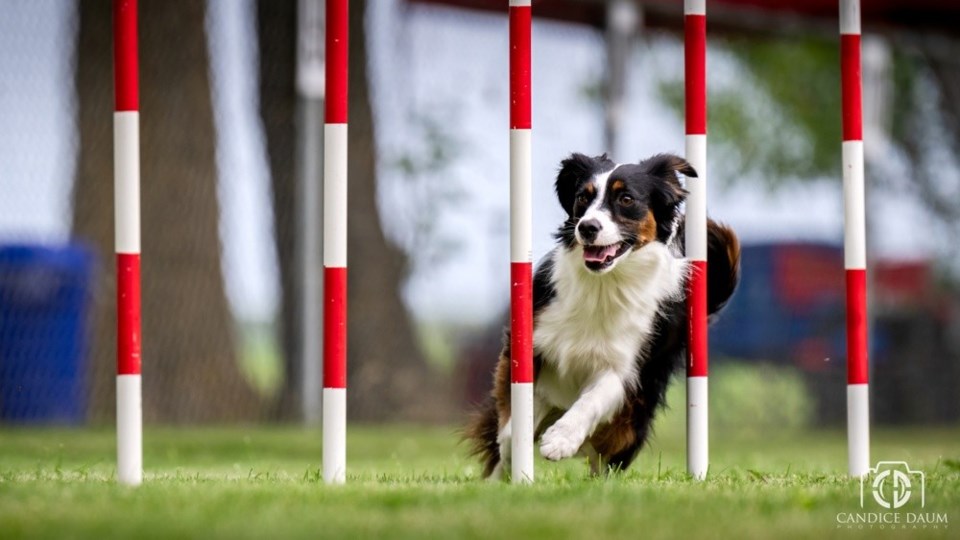YORKTON - If you are a sports fan you have probably watch equestrian jumping – especially in a summer like this with horses jumping at the Olympics.
But Grace Frankel wonders why if equestrian jumping in an Olympic sport, then why isn’t dog agility?
“I think about that now that the Olympics are coming up,” said, Frankel, who will compete at the 22nd Agility Association of Canada (AAC) National event to be held in Maxville, Ontario Aug. 15 -18, with two dogs; Finnegan an Australian Shepherd and Ziera, a Miniature American Shepherd.
“In equestrian they do all sorts of things with horses.”
So why not events highlighting canine handler combinations? she asked
Certainly the national event in Canada is proving the sport’s popularity. With 395 people and 532 dogs entered, necessitating moving from three to five course rings this year.
For those unfamiliar, Wikipedia provides the following on dog agility.
“Dog agility is a dog sport in which a handler directs a dog through an obstacle course in a race for both time and accuracy. Dogs run off leash with no food or toys as incentives, and the handler can touch neither dog nor obstacles. The handler's controls are limited to voice, movement, and various body signals, requiring exceptional training of the animal and coordination of the handler.
“An agility course consists of a set of standard obstacles laid out by a judge in a design of their own choosing in an area of a specified size. The surface may be of grass, dirt, rubber, or special matting. Depending on the type of competition, the obstacles may be marked with numbers indicating the order in which they must be completed.
“Courses are complicated enough that a dog could not complete them correctly without human direction. In competition, the handler must assess the course, decide on handling strategies, and direct the dog through the course, with precision and speed equally important. Many strategies exist to compensate for the inherent difference in human and dog speeds and the strengths and weaknesses of the various dogs and handlers.”
Frankel said she isn’t entirely sure why her interest in the sport, but it might go back to her childhood.
“I didn’t have a dog when I was young,” she said, adding it just wasn’t something in the family budget, so when she got her first dog as an adult perhaps she simply appreciated it all the more.
But agility interested her.
“I’ve been watching since I was little,” said Frankel.
Frankel’s first dog turned out to be something of a teacher.
“I learned a lot from him,” she said. “He introduced me to agility, but he didn’t take it seriously.”
The interest stuck as Frankel said the sport challengers her.
“Can I teach my dog to do this? What can I do to make this better to help them to get there? Can I be a better teammate for my dog?” she questioned.
The dog however was a pleaser.
“He liked making people smile. That was kind of his jive,” said Frankel. “. . . My first dog sort of taught me there’s not a bad day.”
Now with Finnegan Frankel has a dog she is just happy is around to compete. He has epilepsy, and it was a struggle to find a way just to stabilize his life. Being able to compete now is really a second chance, she said.
“He’s not the fastest dog. There’s no way he can win,” she said, adding she is just happy Finnegan is still with her to compete. “. . . I’m doing it because he loves it.”
While Frankel said she has no expectation of winning at nationals with a dog that has battled epilepsy and a young one in Ziera, that really isn’t her goal anyway.
“You do your best that you and your teammate can do,” she said, adding in Ziera she feels she has a young prodigy just learning the sport.
It is also something accessible to all.
“Anybody can do this,” offered Frankel, adding a few basic jumps in the backyard “lets you teach your dog the basics.”






